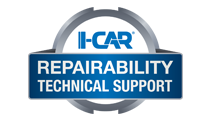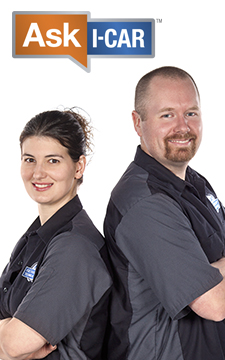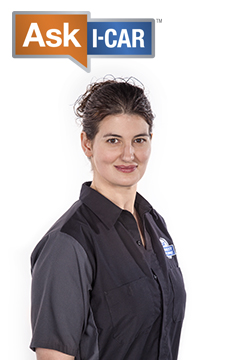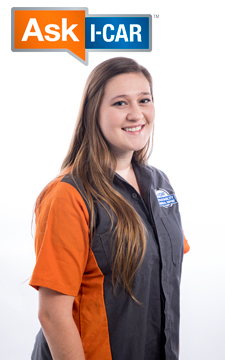OEM Restraints System Part Replacement Search
2016 Chrysler 200 Sedan
Share:
|
DISABLE PROCEDURE AND TIME (Always Check Service Manual)
WARNING: To avoid potential physical injury or damage to sensitive electronic circuits and systems, always disconnect and isolate the battery negative (ground) cable and the positive cable, then ground the positive cable to discharge the Occupant Restraint Controller (ORC) capacitor before performing any welding operations on the vehicle.1. Disconnect and isolate the battery negative (ground) cable
2. Wait two minutes for the system capacitor to discharge before performing further diagnosis or service
REV: 05/2017
PARTS THAT MUST BE REPLACED FOLLOWING A DEPLOYMENT
If the driver airbag is deployed:• Driver AirBag (DAB) [AIRBAG,STEERING WHEEL]
• Clockspring
• Steering column assembly
• Both front seat belt anchor buckle tensioners
• Both front seat belt retractor and tensioner assemblies
• Any front seat belt buckle in use
• All rear seat belt retractors and buckles in use
If the knee airbags are deployed:
• Knee AirBags (KAB) [AIRBAG,KNEE BOLSTER]
• Instrument panel steering column opening cover (left side)
• Glove box (right side)
If the passenger airbag is deployed:
• Passenger AirBag (PAB) [AIRBAG,INSTRUMENT PNL]
• Instrument panel
If a seat airbag is deployed:
• Seat AirBag (SAB) [AIRBAG,FRONT SEAT]
• Seat back frame on the same side of the vehicle as the deployed airbag
• Seat back foam on the same side of the vehicle as the deployed airbag
• Seat back trim cover on the same side of the vehicle as the deployed airbag
• Both front seat belt anchor buckle tensioners
• Both front seat belt retractor and tensioner assemblies
• Any front seat belt buckle in use
• All rear seat belt retractors and buckles in use
If a side curtain airbag is deployed:
• Side AirBag Inflatable Curtain/SABIC) [AIRBAG,ROOF]
• Deploy brackets on the upper B and C-pillars on the same side of the vehicle as the deployed airbag
• Trim on the upper A, B and C-pillars on the same side of the vehicle as the deployed airbag
• Side impact sensors on the same side of the vehicle as the deployed airbag
• Headliner
• Both front seat belt anchor buckle tensioners
• Both front seat belt retractor and tensioner assemblies
• Any front seat belt buckle in use
• All rear seat belt retractors and buckles in use
If a seat belt tensioner is deployed:
• The seat belt retractor and anchor buckle tensioners as well as the adaptive load limiters are deployed in conjunction with the front airbags, but can also be deployed with a Seat AirBag (SAB) (also known as a pelvic and thoracic airbag) or a side curtain airbag (also known as Side AirBag Inflatable Curtains/SABIC).
• All seat belt tensioners must be replaced if any airbag in the vehicle except a Knee AirBag (KAB) has been deployed.
PARTS THAT MUST BE INSPECTED AND REPLACED IF DAMAGED
It is critical that the mounting surfaces and mounting brackets for the Occupant Restraint Controller (ORC), front impact sensors and side impact sensors located within the proximity of the impact damage be closely inspected and restored to their original conditions. [MODULE,AIRBAG CONTROL; AIRBAG SENSOR,FRONT; AIRBAG SENSOR,FRT DOOR; AIRBAG SENSOR,SIDE; AIRBAG SENSOR,QTR PANEL]Following ANY airbag deployment event:
• Lower Anchors and Tethers for CHildren (LATCH) provisions
• Upper tether anchors (if equipped)
• All interior trim panels
If an active head restraint is deployed:
• An inertia-based Active Head Restraint (AHR) unit that is undamaged following a deployment automatically resets itself. These units are designed with the intention of reuse.
If the driver airbag is deployed:
• Front impact sensors
• Steering wheel
If the knee airbags are deployed:
• Instrument panel
If a side curtain airbag is deployed:
• Sunroof
• Sunroof drain tubes and hoses
All other vehicle components should be closely inspected following any SRS component deployment, but are to be replaced only as required by the extent of the visible damage incurred.
Squib Circuit Damage. There are two methods by which an airbag or seat belt tensioner may be connected to the vehicle electrical system:
1) The first method involves a short pigtail harness and connector insulator that are integral to the airbag or tensioner unit and are replaced as a unit with the service replacement airbag or seat belt tensioner. This connection method typically requires no additional wiring repair following a deployment.
2) The second connection method involves a wire harness takeout and connector insulator that are connected directly to the airbag or tensioner initiator or squib. These direct-connect type take outs and connector insulators MUST be repaired following an airbag or seat belt tensioner deployment using the approved Supplemental Restraint System Wiring Repairs procedure.
| Additional Information |
*This matrix does not currently contain all production vehicles sold in the United States. The contents were developed in cooperation with AudaExplore, a Solera company. The contents are based on the information available at the time of publication. Updates and additions will be posted as they become available. To ensure that you are using the most recent information, always refer to vehicle maker technical information.









